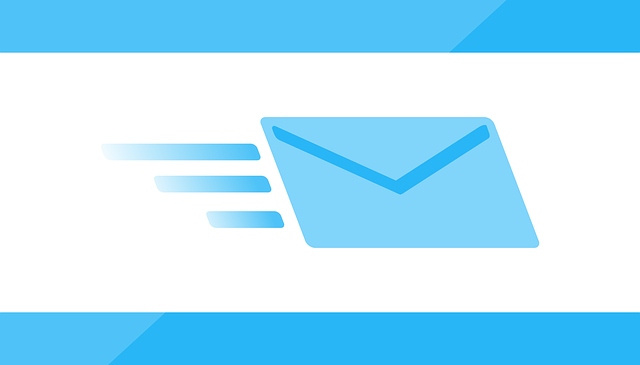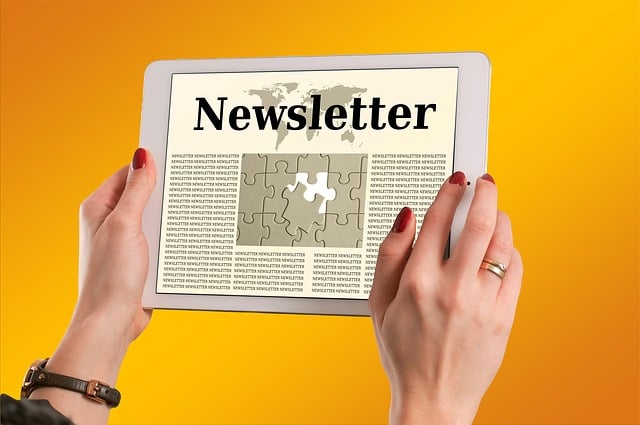Did you know that email marketing has an average return on investment (ROI) of $38 for every $1 spent? As a freelancer, tracking the performance of your email marketing campaigns is crucial for maximizing your success and reaching your goals.
Email marketing analytics provides valuable insights into the effectiveness of your campaigns, allowing you to make data-driven decisions and optimize your strategy. In this article, you will learn about key metrics to track in email marketing analytics, such as open rates and click-through rates, and understand their significance in measuring engagement.
You will also discover how to convert metrics into measurable success and ROI. By utilizing data and analytics, you can gain a deep understanding of your audience, improve your email marketing performance, and ultimately drive more conversions and revenue.
Get ready to take your freelance business to new heights with the power of email marketing analytics.
Key Takeaways
- Email marketing analytics provides valuable insights into campaign effectiveness.
- Key metrics to track in email marketing analytics include open rates and click-through rates.
- Understanding open rates helps measure engagement and optimize email content.
- Strategies to improve click-through rates include segmenting the audience and crafting compelling calls-to-action.
Key Metrics to Track in Email Marketing Analytics
If you’re a freelancer diving into the world of email marketing, one of the first things you’ll want to know is what key metrics you should be tracking.
Two important metrics to keep an eye on are deliverability rates and conversion rates. Deliverability rates ensure that your emails are reaching the intended recipients. It’s crucial to monitor this metric as it directly affects the success of your email campaigns.
On the other hand, conversion rates track the number of subscribers who take a desired action after receiving your emails. Whether it’s making a purchase, signing up for a webinar, or downloading an ebook, conversion rates indicate the effectiveness of your email marketing efforts.
Understanding open rates and their significance will be discussed in the subsequent section, providing further insights into your email performance.
Understanding Open Rates and Their Significance
To truly grasp the essence of open rates and their impact, you must uncover the hidden messages lying within the numbers.
Open rates are a crucial metric for measuring the effectiveness of your email marketing campaigns. They indicate the percentage of recipients who actually opened your emails, giving you insight into how well your subject lines and preheaders are enticing your audience.
By tracking conversions alongside open rates, you can determine the true effectiveness of your emails in driving action. Are recipients opening your emails but not taking any further action? Or are they opening and immediately converting?
Understanding open rates allows you to optimize your email content and strategies to improve engagement and drive better results.
Speaking of engagement, let’s now dive into analyzing click-through rates for better insights into your audience’s behavior.
Analyzing Click-Through Rates for Better Engagement
Get ready to uncover the secrets of your audience’s behavior and boost their engagement by diving deep into analyzing click-through rates. Understanding how many people click on the links in your email can provide valuable insights into the effectiveness of your content and call-to-action.
To improve conversion and maximize engagement, consider these key strategies:
-
Segmenting Audience: Tailor your email campaigns to specific segments of your audience based on their interests, demographics, or past engagement. By sending targeted emails, you can increase the relevance of your content and drive higher click-through rates.
-
Crafting Compelling Calls-to-Action: Create clear and enticing calls-to-action that encourage readers to take the desired action. Use persuasive language, compelling visuals, and a sense of urgency to capture their attention and drive click-throughs.
-
Testing and Optimizing: Continuously test different elements of your emails, such as subject lines, layout, and placement of links, to identify what resonates most with your audience. Use the data from these tests to optimize your email campaigns and improve click-through rates.
By analyzing click-through rates and implementing these strategies, you can enhance engagement and pave the way for successful conversions.
Now, let’s dive into converting metrics to measure success and ROI.
Converting Metrics: Measuring Success and ROI
Now it’s time to uncover the secrets of measuring success and ROI by converting metrics. When it comes to email marketing analytics, measuring effectiveness and tracking conversions are crucial for freelancers. To truly understand the impact of your campaigns, you need to analyze more than just click-through rates. By converting metrics, you can gain insights into the actions your subscribers take after opening your emails, such as making a purchase or signing up for a newsletter. To help you visualize this process, here is a table showcasing the different conversion metrics you should be tracking:
| Metric | Definition | Importance |
|---|---|---|
| Conversion Rate | Percentage of recipients who complete a desired action | Indicates the effectiveness of your campaign |
| Revenue per Email | Average amount of revenue generated per email sent | Measures the profitability of your campaigns |
| Lifetime Value | Predicted revenue a subscriber will generate over their lifetime | Helps prioritize high-value customers |
By measuring these metrics, you can determine the success of your email marketing efforts and identify areas for improvement. Using data to optimize email marketing campaigns is a powerful strategy to increase engagement and drive better results.
Using Data to Optimize Email Marketing Campaigns
By harnessing data-driven insights, you can enhance the efficiency and outcomes of your email campaigns. Data-driven strategies allow you to analyze key metrics such as open rates, click-through rates, and conversion rates to identify areas of improvement.
For example, by tracking which subject lines generate the highest open rates, you can optimize your email content to increase engagement. Additionally, analyzing click-through rates can help you identify the most compelling call-to-action buttons or links, leading to higher conversions.
By continuously monitoring and analyzing these metrics, you can make data-driven decisions to optimize your email marketing campaigns and drive better results.
In the next section, we will explore some tips for improving email marketing performance and leveraging these data-driven insights to further enhance your freelancing business.
Tips for Improving Email Marketing Performance
One effective way to enhance the performance of your email campaigns is by analyzing data-driven insights to optimize your content and boost engagement. By tracking metrics such as open rates, click-through rates, and unsubscribe rates, you can gain valuable insights into the effectiveness of your email marketing strategy. This data can help you identify areas for improvement and tailor your content to better resonate with your audience. Additionally, improving deliverability is crucial for ensuring that your emails reach the intended recipients. To achieve this, focus on maintaining a clean and up-to-date email list, using a reputable email service provider, and avoiding spammy practices. Personalization strategies, such as segmenting your email list and using personalized subject lines, can also significantly improve engagement and conversions. Use the table below to visualize these tips:
| Tip | Description | |||
|---|---|---|---|---|
| Track Metrics | Analyze open rates, click-through rates, and unsubscribe rates to gain insights. | |||
| Improve Deliverability | Maintain a clean email list, use a reputable email service provider, and avoid spammy practices. | |||
| Personalization Strategies | Segment your email list and use personalized subject lines to boost engagement. | Tailor Content | Create relevant and valuable email content that resonates with your subscribers. |
Frequently Asked Questions
How can I track the performance of my email marketing campaigns beyond open rates and click-through rates?
To go beyond open rates and click-through rates when tracking the performance of your email marketing campaigns, you need to focus on tracking conversions and analyzing customer behavior.
These metrics will give you a deeper understanding of how your campaigns are truly performing and how they are impacting your bottom line. By diving into conversion data and studying customer interactions, you can uncover valuable insights that will help you optimize your campaigns and drive better results.
What are some common challenges freelancers face when it comes to email marketing analytics?
Common challenges freelancers face in email marketing analytics include limited resources, lack of expertise, and difficulty in measuring ROI.
To overcome these challenges and improve your strategies, consider investing in automation tools to streamline processes.
Join online communities or forums to learn from experienced professionals.
Set clear goals and track key metrics to measure success.
Additionally, regularly analyze and optimize your campaigns based on data insights to achieve better results and drive higher engagement with your audience.
Are there any specific email marketing analytics tools or software that freelancers can use?
There are numerous email marketing analytics software to help freelancers track their email campaign performance. One interesting statistic is that, according to a survey conducted by Litmus, 61% of marketers rely on email analytics to measure their campaign success.
For freelancers, popular options include MailChimp and Constant Contact. These tools provide valuable insights into open rates, click-through rates, and subscriber engagement, allowing freelancers to optimize their email marketing strategies and achieve better results.
How can I measure the effectiveness of my email marketing campaigns in terms of generating leads or sales?
To measure the effectiveness of your email marketing campaigns in terms of generating leads or sales, you need to focus on measuring ROI and optimizing your email content.
Track the number of leads or sales generated from each campaign and compare it to the cost of running the campaign. Analyze open rates, click-through rates, and conversion rates to identify which emails are performing well.
Then, optimize your email content by testing different subject lines, call-to-actions, and personalization techniques to improve your results.
What are some best practices for analyzing and interpreting email marketing analytics data to make informed decisions?
To make informed decisions based on email marketing analytics data, start by analyzing email marketing segmentation. This involves dividing your subscriber list into smaller groups based on demographics, interests, or behavior.
By sending targeted emails to these segments, you can improve engagement and conversion rates.
Speaking of conversion rates, tracking and analyzing them is crucial. Look for patterns and trends in your data to identify what works and what doesn’t, allowing you to optimize your email marketing campaigns for better results.
Conclusion
So there you have it, freelancers! Email marketing analytics can be your secret weapon to success. By tracking key metrics like open rates and click-through rates, you can gain valuable insights into your audience’s engagement.
Converting metrics provide a clear measure of your campaign’s success and ROI. And don’t forget to use data to optimize your email marketing strategies. Just like a skilled painter uses different brushes to create a masterpiece, use these tips to improve your email marketing performance and watch your business flourish like a beautiful garden in full bloom.









